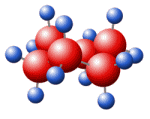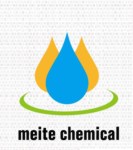|
|
|

|
Suppliers for
HBTU
|
Properties | | CAS |
94790-37-1 | | Formula |
C11H16N5O.PF6 |

|
|
25 Registered suppliers
HBTU (2-(1H-benzotriazol-1-yl)-1,1,3,3-tetramethyluronium hexafl uorophosphate) is a coupling reagent used in solid phase peptide synthesis. It was introduced in 1978 and shows resistance against racemization. It is used because of its mild activating properties.
| | Appearance & Physical State | White crystalline powder
| | Melting Point | 200ēC
| | Flash Point | 200ēC
| | Stability | Stable. Incompatible with oxidizing agents.
| | Storage Condition | 2-8ēC |
HBTU (2-(1H-benzotriazol-1-yl)-1,1,3,3-tetramethyluronium hexafl uorophosphate) is a coupling reagent used in solid phase peptide synthesis. It was introduced in 1978 and shows resistance against racemization. It is used because of its mild activating properties.
| | Appearance & Physical State | White crystalline powder
| | Melting Point | 200ēC
| | Flash Point | 200ēC
| | Stability | Stable. Incompatible with oxidizing agents.
| | Storage Condition | 2-8ēC |
HBTU (2-(1H-benzotriazol-1-yl)-1,1,3,3-tetramethyluronium hexafl uorophosphate) is a coupling reagent used in solid phase peptide synthesis. It was introduced in 1978 and shows resistance against racemization. It is used because of its mild activating properties.
| | Appearance & Physical State | White crystalline powder
| | Melting Point | 200ēC
| | Flash Point | 200ēC
| | Stability | Stable. Incompatible with oxidizing agents.
| | Storage Condition | 2-8ēC |
HBTU (2-(1H-benzotriazol-1-yl)-1,1,3,3-tetramethyluronium hexafl uorophosphate) is a coupling reagent used in solid phase peptide synthesis. It was introduced in 1978 and shows resistance against racemization. It is used because of its mild activating properties.
| | Appearance & Physical State | White crystalline powder
| | Melting Point | 200ēC
| | Flash Point | 200ēC
| | Stability | Stable. Incompatible with oxidizing agents.
| | Storage Condition | 2-8ēC |
HBTU (2-(1H-benzotriazol-1-yl)-1,1,3,3-tetramethyluronium hexafl uorophosphate) is a coupling reagent used in solid phase peptide synthesis. It was introduced in 1978 and shows resistance against racemization. It is used because of its mild activating properties.
| | Appearance & Physical State | White crystalline powder
| | Melting Point | 200ēC
| | Flash Point | 200ēC
| | Stability | Stable. Incompatible with oxidizing agents.
| | Storage Condition | 2-8ēC |
More details are to be found here
Molecular Formula: C11H16N5O.F6P
Molecular Weight: 379.24
Hazard Symbols: Xi,Xn
WGKGermany: 3
HS Code: 29339980
Molecular Formula: C11H16N5O.F6P
Molecular Weight: 379.24
Hazard Symbols: Xi,Xn
WGKGermany: 3
HS Code: 29339980
Molecular Formula: C11H16N5O.F6P
Molecular Weight: 379.24
Hazard Symbols: Xi,Xn
WGKGermany: 3
HS Code: 29339980
Molecular Formula: C11H16N5O.F6P
Molecular Weight: 379.24
Hazard Symbols: Xi,Xn
WGKGermany: 3
HS Code: 29339980
Molecular Formula: C11H16N5O.F6P
Molecular Weight: 379.24
Hazard Symbols: Xi,Xn
WGKGermany: 3
HS Code: 29339980
Molecular Formula: C11H16N5O.F6P
Molecular Weight: 379.24
Hazard Symbols: Xi,Xn
WGKGermany: 3
HS Code: 29339980
Molecular Formula: C11H16N5O.F6P
Molecular Weight: 379.24
Hazard Symbols: Xi,Xn
WGKGermany: 3
HS Code: 29339980
Molecular Formula: C11H16N5O.F6P
Molecular Weight: 379.24
Hazard Symbols: Xi,Xn
WGKGermany: 3
HS Code: 29339980
Molecular Formula: C11H16N5O.F6P
Molecular Weight: 379.24
Hazard Symbols: Xi,Xn
WGKGermany: 3
HS Code: 29339980
Molecular Formula: C11H16N5O.F6P
Molecular Weight: 379.24
Hazard Symbols: Xi,Xn
WGKGermany: 3
HS Code: 29339980
More details are to be found here
More details are to be found here
More details are to be found here
More details are to be found here
More details are to be found here
Formula: C11H16N5O*PF6 Mol Weight: 234,28*144,96g/mol E.C.No: --
More details are to be found here
Formula: C11H16N5O*PF6 Mol Weight: 234,28*144,96g/mol E.C.No: --
More details are to be found here
Formula: C11H16N5O*PF6 Mol Weight: 234,28*144,96g/mol E.C.No: --
More details are to be found here
Formula: C11H16N5O*PF6 Mol Weight: 234,28*144,96g/mol E.C.No: --
More details are to be found here
Detailed information on the suppliers of
HBTU |
Properties:
... more properties and specification on HBTU
|
|
Privileged suppliers
Last update 2024-04-26
|



 details
details details
details








